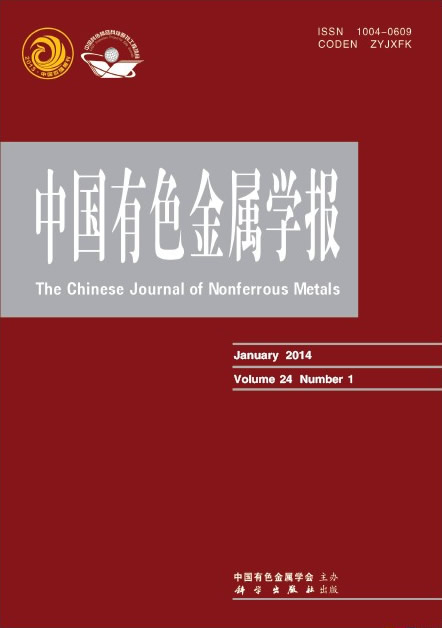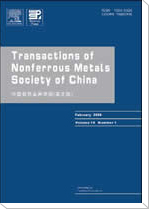(1. 重庆大学 国家镁合金材料工程技术研究中心,重庆 400030;
2. 重庆大学 材料科学与工程学院,重庆 400045)
摘 要: 采用热力学方法计算并分析真空硅热法炼锶的反应自由能和临界还原温度。结果表明,造渣反应和真空工艺可有效降低反应自由能,并可将反应临界温度由标准状态下的2 876 K降低到1 100 K以下。通过真空硅热法炼锶实验获得纯度(质量分数)为98.53%的金属锶,锶的收得率为55%。经XRD技术分析,反应后残留渣团的主要成分为2SrO∙SiO2,并掺有少量的SrO∙SiO2。
关键字: Sr;真空硅热法;热力学;造渣反应;应用性
(1. National Engineering Research Center for Magnesium Alloys, Chongqing University, Chongqing 400030, China;
2. College of Material Science and Engineering, Chongqing University, Chongqing 400045, China)
Abstract:The Gibbs free energy and critical reduction temperature of vacuum silicothermic reduction producing metallic strontium were calculated and analyzed by thermodynamics. The results show that the slagging reactions and vacuum technique can lower the Gibbs free energy of the reduction reactions obviously and the critical temperature decreases from 2 876 K to below 1 100 K. Through the experiment of vacuum silicothermic reduction producing metallic strontium, the pure metallic Sr (98.53%, mass fraction) is obtained and the metal yield is 55%. Through XRD analysis, the main compound in the reaction slag is 2SrO∙SiO2, accompanied by a little amount of SrO∙SiO2.
Key words: Sr; vacuum silicothermic reduction; thermodynamics; slagging reaction; applicability


